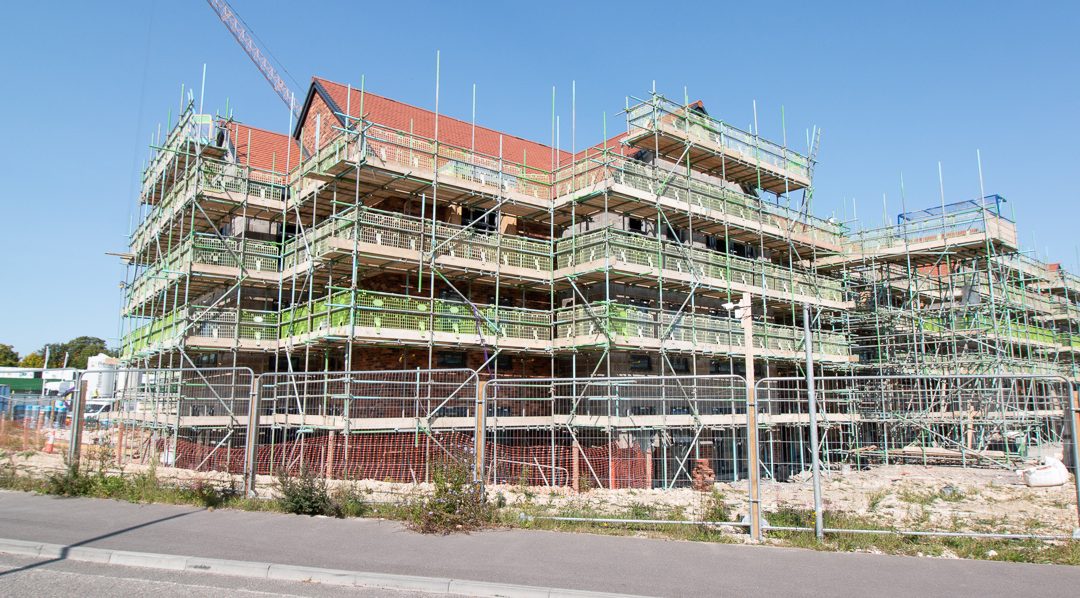UK Construction… Landscape 2023
Industry matters • News • Regulation
The UK construction industry finds itself at a crossroads in 2023, grappling with a complex set of challenges against the backdrop of economic uncertainty. The last quarter of 2022 witnessed a stagnant UK economy, exacerbated by an ongoing cost of living crisis that stubbornly persists. Compounding these issues, the Bank of England’s interest base rates are projected to reach 6% by the end of this year, introducing further uncertainty into the mix. Amidst these adversities, the construction sector faces a multitude of obstacles.
The Struggles Ahead
The challenges confronting the industry are well-documented and formidable. Overheads are on the rise across the board, putting immense pressure on profit margins. The Construction Products Association’s (CPA) winter forecast anticipated a potential decline in activity by up to 4.7% in 2023. Labour shortages persist, with fierce competition for skilled labour taking a toll. The Construction Industry Training Board (CITB) warns that the sector will require an additional 225,000 workers by 2027. The ebb in project volumes is evident and Glenigan Insights has predicted a 2% dip in demand for new construction endeavours. Evolving legislation emphasises the responsibility for sustainable design and execution, with new building safety reforms reshaping every phase of projects. Changes have also been made to planning laws, adding complexity to the regulatory landscape.
Navigating Planning Laws
Leading legal firm Weightmans outlines key developments in planning law:
- Scope of s73 permissions amends to planning permissions – recent cases challenge the limits as to what constitutes minor material amends and how far this can be interpreted. A recent case (Finney v Welsh Ministers) concluded that you cannot amend the description of the development using a s73 application. The draft Levelling-up and Regeneration Bill 2022 proposes a new s73B mechanism to allow non-substantial changes to be made to planning permissions – but when and how this will be implemented remains to be seen
- Drop-in permissions – the position relating to ‘drop-in’ planning permissions changed with the ruling of the Court of Appeal in Hillside Parks Ltd v Snowdonia National Park Authority. This makes it clear that if two developments on the same site are incompatible, once the later permission is built out, no further development can take place pursuant to the earlier permission. This will apply to the whole site, not just the area affected by the ‘drop-in’.
- Nutrient neutrality – developments proposed for areas subject to Natural England’s nutrient pollution controls (updated on 16 March 2022 and taking immediate effect) now need to demonstrate that any new development would be ‘nutrient neutral’ before planning permission can be granted. On-site or off-site mitigation strategies need to be built into the development proposal to ensure the development is ‘nutrient neutral’.
- The requirements for Biodiversity Net Gain (BNG) – from November 2023, the Environment Act 2021 will require developers to provide a minimum of 10% increase in the biodiversity compared to the pre-construction condition of the site. BNG can be provided by works on-site, or offsite on land controlled by a developer, third party or as part of a larger habitat bank site or by acquiring credits issued by the Secretary of State who will use the proceeds to deliver BNG.
 Construction Output
Construction Output
According to the CPA, construction output is forecast to fall from a record-high level and contract by 6.4% by the end of 2023 according to its spring forecast. CPA says this is a downgrade from a fall of 4.7% expected in the winter, driven primarily by sharp falls in the two largest construction sectors – private new housing and private housing repair, maintenance, and improvement (rm&i) – together with recent government announcements of delays to major infrastructure projects.
Private housing new build, and private housing rm&i account for around 40% of total construction output and are forecast to be the sectors in which demand is most affected by a macroeconomic backdrop of falling household incomes and higher interest rates. In infrastructure, the third-largest sector, growth is expected but has been downgraded from CPA’s winter forecasts owing to government delaying HS2 work at Euston station and work on major road schemes. A wider recovery in economic growth in 2024 is expected to boost demand for both new build housing and rm&i activity and total construction output is forecast to return to growth, rising by 1.1%. However, the CPA’s latest forecast says that private housing is the sector forecast to experience the sharpest contraction in 2023, with a 7.0% fall in output in 2023, before recovering slowly in 2024 with growth of just 0.7%.
Building Safety Act 2022 – Building Liability Orders
The Building Safety Act 2022 introduces a new legal facet, where Building Liability Orders (BLOs) are a key provision. These orders extend specific liabilities between associated corporate bodies, overturning previous contractual norms and promoting shared responsibility. The considerations for granting BLOs remain untested, as no reported decisions have yet emerged.
Climate Change Considerations
The Carbon Emissions (Buildings) Bill, currently in the legislative process, underscores the construction industry’s environmental responsibilities. It mandates reporting of whole-life carbon emissions and sets limits on embodied carbon emissions during building construction. This bill reflects the growing trend toward ‘green’ policies in the industry, aimed at reducing carbon emissions and promoting sustainability.
Insolvency
Construction company insolvencies have reached a decade-high, due to a convergence of factors, including labour and material shortages, inflation, rising interest rates, and dampened demand. The ripple effects of one company’s insolvency extend through the supply chain, underscoring the industry’s vulnerability.
Infrastructure
The National Infrastructure Commission’s forthcoming assessment in autumn 2023 will chart the UK’s long-term infrastructure needs. It emphasises three strategic outcomes: achieving net-zero emissions, mitigating environmental impacts, and supporting equitable development.
Addressing Skills Shortages
The Construction Industry Training Board’s report underscores a pressing need for 225,000 additional construction workers by 2027. Upskilling the existing workforce through apprenticeships, partnerships with educational institutions, and diversity initiatives is crucial.
Tackling Challenges Head-On
To thrive in this landscape, businesses must proactively navigate challenges:
- Regulation: Staying updated on regulations is vital to avoid penalties. Engaging with regulatory bodies and meticulous record-keeping are essential
- Labour Shortages: Investing in workforce training, upskilling, and diversity initiatives are key strategies for addressing labour shortages
- Cost and the Housing Market: Innovative construction methods and collaborations with housing associations can address housing demand while managing costs.
In Conclusion
In 2023 the UK construction industry confronts a demanding environment, necessitating adaptability, technological integration, and strategic partnerships. Through resilience and innovation, companies can not only overcome challenges but also shape a sustainable, efficient, and vibrant future for the sector and the UK’s construction landscape as a whole.
 How can Ground & Water help?
How can Ground & Water help?
While we are equally affected by many of the challenges facing the industry, and clearly cannot influence the economic drivers behind some of the major challenges outlined above, we can help mitigate others.
Sustainable construction and reducing carbon emissions starts at the design stage of a project and you will see from previous blogs getting the best out of your ground is the key.
Nutrient neutrality is a persistent issue, and we have extensive experience of designing schemes to mitigate its effect to satisfy planners.
Building safety is another area that must be addressed at the start of the design process, taking into account risks found at the Site Investigation stage. This makes investing in a high-quality Site Investigation even more important. We can also advise you on how to improve the biodiversity of your site.
Challenges are best tackled together, so give Ground & Water a call if you think we can help.

 Construction Output
Construction Output How can Ground & Water help?
How can Ground & Water help?